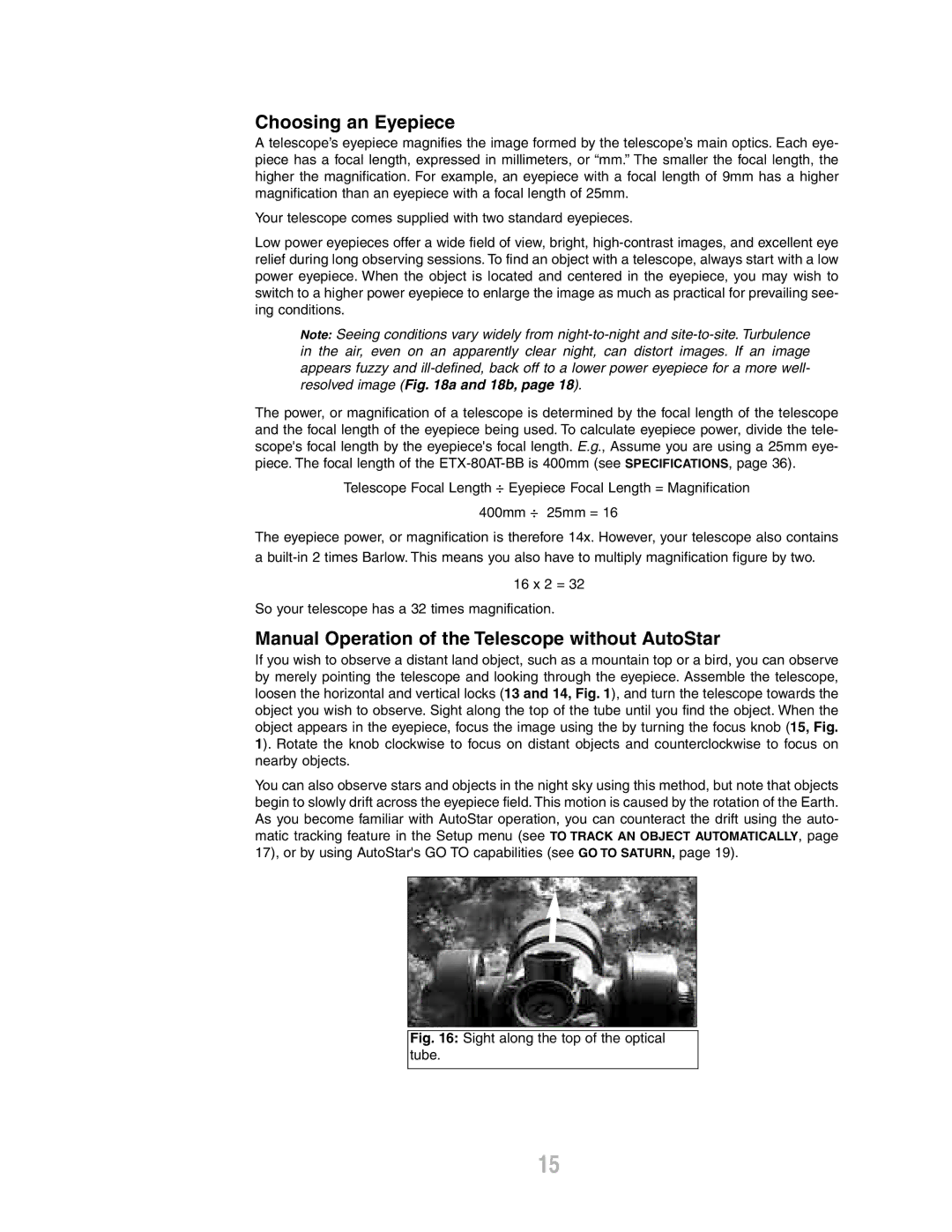
Choosing an Eyepiece
A telescope’s eyepiece magnifies the image formed by the telescope’s main optics. Each eye- piece has a focal length, expressed in millimeters, or “mm.” The smaller the focal length, the higher the magnification. For example, an eyepiece with a focal length of 9mm has a higher magnification than an eyepiece with a focal length of 25mm.
Your telescope comes supplied with two standard eyepieces.
Low power eyepieces offer a wide field of view, bright,
Note: Seeing conditions vary widely from
The power, or magnification of a telescope is determined by the focal length of the telescope and the focal length of the eyepiece being used. To calculate eyepiece power, divide the tele- scope's focal length by the eyepiece's focal length. E.g., Assume you are using a 25mm eye- piece. The focal length of the
Telescope Focal Length ÷ Eyepiece Focal Length = Magnification
400mm ÷ 25mm = 16
The eyepiece power, or magnification is therefore 14x. However, your telescope also contains
a
16 x 2 = 32
So your telescope has a 32 times magnification.
Manual Operation of the Telescope without AutoStar
If you wish to observe a distant land object, such as a mountain top or a bird, you can observe by merely pointing the telescope and looking through the eyepiece. Assemble the telescope, loosen the horizontal and vertical locks (13 and 14, Fig. 1), and turn the telescope towards the object you wish to observe. Sight along the top of the tube until you find the object. When the object appears in the eyepiece, focus the image using the by turning the focus knob (15, Fig. 1). Rotate the knob clockwise to focus on distant objects and counterclockwise to focus on nearby objects.
You can also observe stars and objects in the night sky using this method, but note that objects begin to slowly drift across the eyepiece field. This motion is caused by the rotation of the Earth. As you become familiar with AutoStar operation, you can counteract the drift using the auto- matic tracking feature in the Setup menu (see TO TRACK AN OBJECT AUTOMATICALLY, page 17), or by using AutoStar's GO TO capabilities (see GO TO SATURN, page 19).
Fig. 16: Sight along the top of the optical tube.
15
